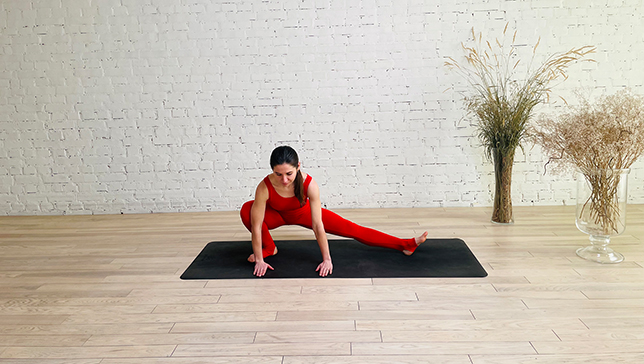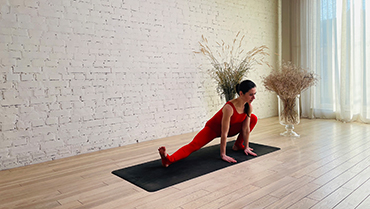Side Lunge - Skandasana

Contents
Side Lunge or Skandasana (skuhn-DAHS-uh-nuh) is a beginner-level hip-opening asana that is meant to stretch your hips and hamstrings. It is a relatively simple exercise, making it perfect for beginners. The best time to perform it is before a workout.
Skandasana is commonly practiced as one pose in a sequence of flowing yoga poses. It can, however, also be performed as a stand-alone stretching exercise.
Skandasana is made up of two words, ‘Skanda’ meaning warrior’s position while preparing for an attack, and “Asana” meaning pose.
Pose Detail
- By Type: Balancing Yoga Poses, Flexibility Yoga Poses, Hip Opening Yoga Poses, Strengthening Yoga Poses
- Difficulty: Beginners
- Body Position: Standing Yoga Poses
Step-by-Step Instructions
Benefits and Contraindications
Stretches your hamstrings and hip adductors
Improves balance
Builds core strength
Increases flexibility for more challenging poses
High blood pressure
Pregnancy
Knee or ankle injury
Hip pain
Balance issues
Photo poses in different angles

Modifications and Props for Beginners
- Use a block underneath your seat to support your joints.
- Option to add a bind with your arms around the bent knee and lower back.
- For a more lunar or restorative version of the posture, allow your upper body to drape toward the ground with the arms relaxed.
Useful Tips
- A beginner should not try to accomplish this pose in one go; it could result in injury.
- While shifting weight from one leg to another, intense pressure is laid on the knees; prefer to go slow here.
Frequently Asked Questions
Variations
- Bound Side Lunge Stretch Pose
- Standing Side Lunge With Forward Bend
Top Preparatory Pose
- Warrior Pose II
- Low Lunge Pose
- Goddess Pose
- Standing Wide Legged Forward Fold Pose